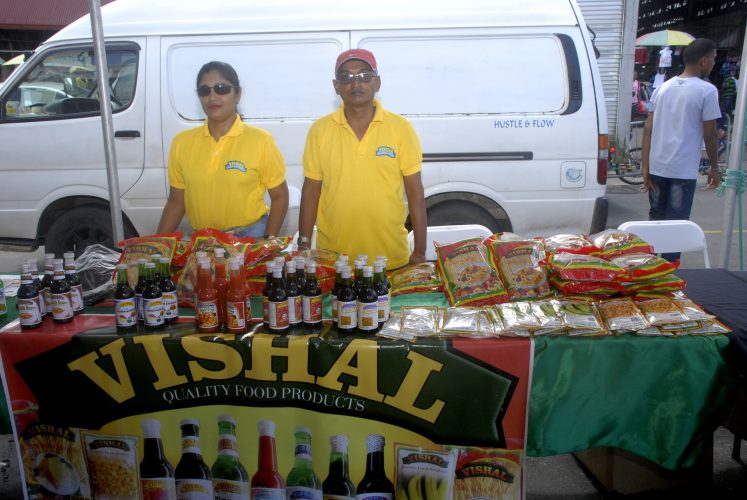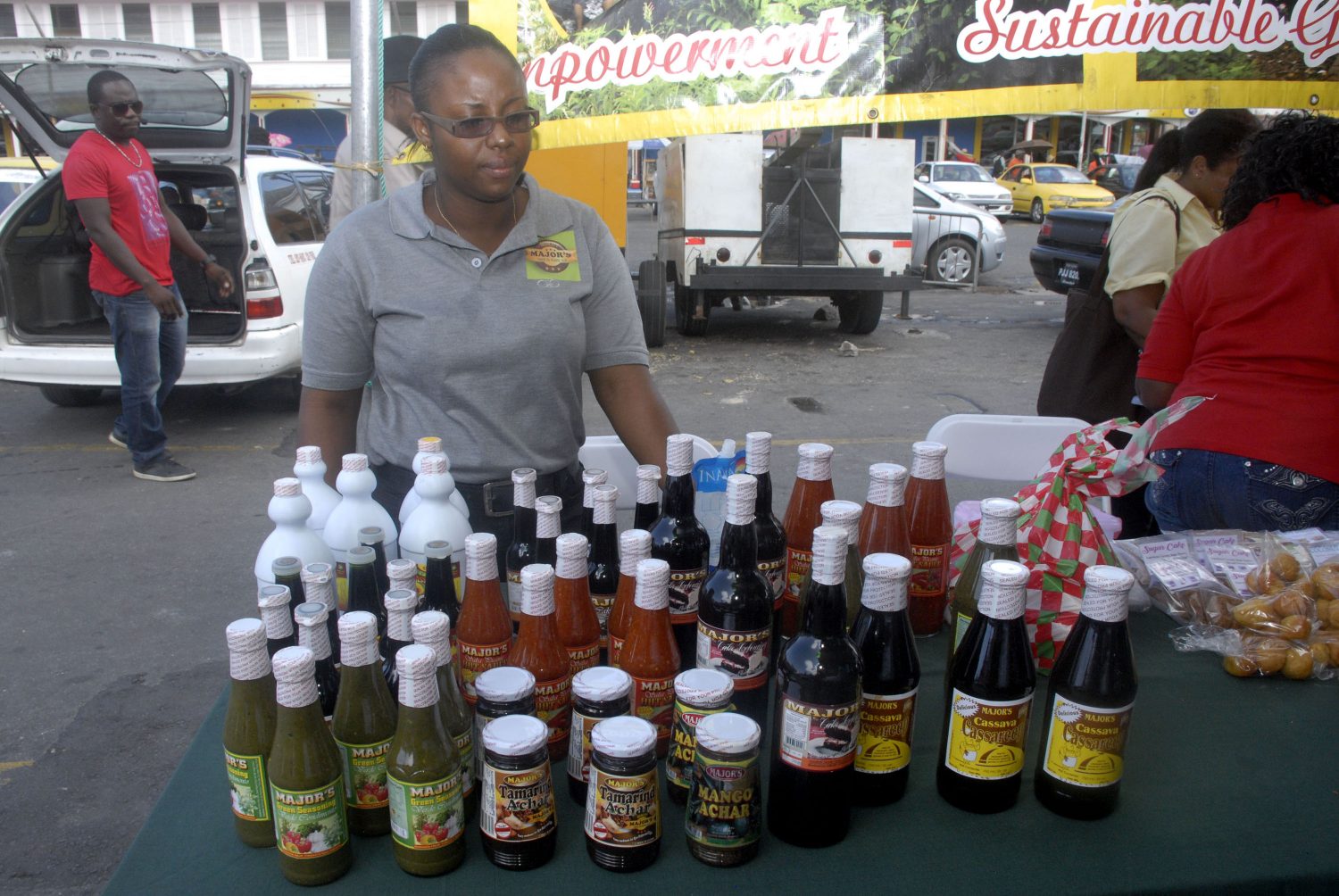Whether the public interest that had been generated by last Friday’s Agro–Processors Street Fair facilitated by the Guyana Marketing Corporation was transformed into a marketing windfall for the vendors whose products were put on display is difficult to say though the available evidence would appear to suggest that the local agro-processing sector still has a hard road to travel if it is ever to be anything more than a miniscule player in the Guyana economy.
As far as the event itself was concerned its location in the area of the Stabroek Market square, mostly just about the busiest part of the capital warranted both more vendors and more potential buyers. Most of the latter told Stabroek Business that they were there because they were “passing by.” An event like this, in an economy such as ours ought really to be more vigorously publicized.
There were about fifteen vendors there and that too was a modest number, given both the hundreds of agro – processing ventures ensuing across the country and the fact that Fridays outside the Stabroek Market could attract windfalls.
We were keen to see whether the presence of agro-processors participating in the Fair might attract the vendors from in and around the Stabroek Market, sizing up possible new products for their stalls. There was some of that too. Some items on display were given a pass mark by usually cynical vendors though the ‘bottom line’ was always the disparity between the agro processors’ wholesale prices and the vendors’ mark ups. We didn’t see any bargains struck but the interaction was a good sign. The overwhelming concern of the agro-processors has to do with market acceptance and the vendors can play a role in helping them to address that.

Last Friday was the first time that the Guyana Marketing Corporation had staged the event outside the Stabroek Market. In circumstances where the focus is on aggressively promoting local agro-produce there is a case to be made for injecting more resources into this kind of initiative. The GMC provides a wider service to local agro processors that includes aspects of the production process, packaging and labeling and marketing through The Guyana Shop. The Shop is a modest facility with a limited clientele and the Fair, in a sense, is a ‘one-off’ extension of the Shop. The fifteen or so agro-processors who set out their stalls outside the Stabroek Market on Friday all benefit from shelf space inside the Guyana Shop.
Torrid
Guyana’s agro-processing sector is going through a protracted and torrid phase of testing. It is a multi-faceted experience that spans areas that include product quality, labeling and packaging, product promotion and market acceptance. In each of these areas there are areas of weakness though there is growing evidence that producers are beginning to come to terms with the requisites of market acceptance. Over time, there has been evidence of improvement in manufacturing techniques and product presentation. The problem is that the mostly modest investors in the agro – processing sector are dogged by considerations of cost. Securing market acceptance, not least shelf space in supermarkets alongside the more formidable imported ‘brand names’ costs money which they do not have. So that if you see a well-turned out local product in display you can be sure that the production level is, at best, a few dozen bottles weekly, not sufficient to make any real impact on the local market, far less to contemplate exports.
Given the level at which the agro processing sector currently operates, there is, unquestionably a role for government. On Friday the vendors were making less than discreet inquiries about support for the accessing and financing of machinery and equipment that could make their production processes more efficient. They believe that there is a role here for government, their argument being that more efficient machinery would increase their output. The challenge, however, goes beyond machinery.
Pink Lotus
Girdharry Persaud who trades under the name of Vishal Quality Food Products and whose products include Chow Mein, essence, pepper sauce, cassareep and Chinese Sauce and whose packaging is, in some instances, imported from China, says that labeling and packaging accounts for about 30 per cent of his overall production costs. Lilawattie Dhanpaul who trades under the name Pink Lotus and who produces a range of snack foods uses locally made labels. She too complains about high labeling and packaging costs. In the case of the Women Agro Processors Development Network high costs of labeling and packaging are also a serious disincentive. The organization’s President Denise Spencer concedes that primarily because the group cannot afford high-quality packaging their products, (pepper sauce, cassareep, jams and jellies and cocoa sticks) quality notwithstanding, would be hard-pressed to stand up to imported competition. The fear among this intrepid band of agro processors appears to be that except they can, somehow, raise their game insofar as product presentation is concerned their enterprises will simply stand still.
At a broader level small local agro processors are beginning to become increasingly aware of the barriers to food exports to North America, not least the conditionalities of the United States’ Food Safety Modernization Act (FSMA) while sets out demanding and costly traceability and other food safety requirements for the importation of foods into the United States.
Here, the agro processors are – perhaps without fully realizing it – suffering from the long-standing inadequacies of the Government Analyst Food and Drug Department whose food testing and certification capabilities the Government of Guyana has failed to upgrade to meet the requirements of the FSMA.
The presence of the Guyana National Bureau of Standards at last Saturday’s Agro processing Fair in its capacity as the local contact point for the FAO/WHO-created Codex Alimentarius Commission (CAC) was at least a reflection of a growing awareness of the nexus between the agro processing sector and safety standards. The CAC’s mandate includes the establishment of food standards for the protection and health of consumers and ensuring fair practices in the food trade. At best, the presence of a state institution that plays a role in overseeing quality control considerations was at least an assurance that the challenged sub-sector is not being left to struggle all on its own.









